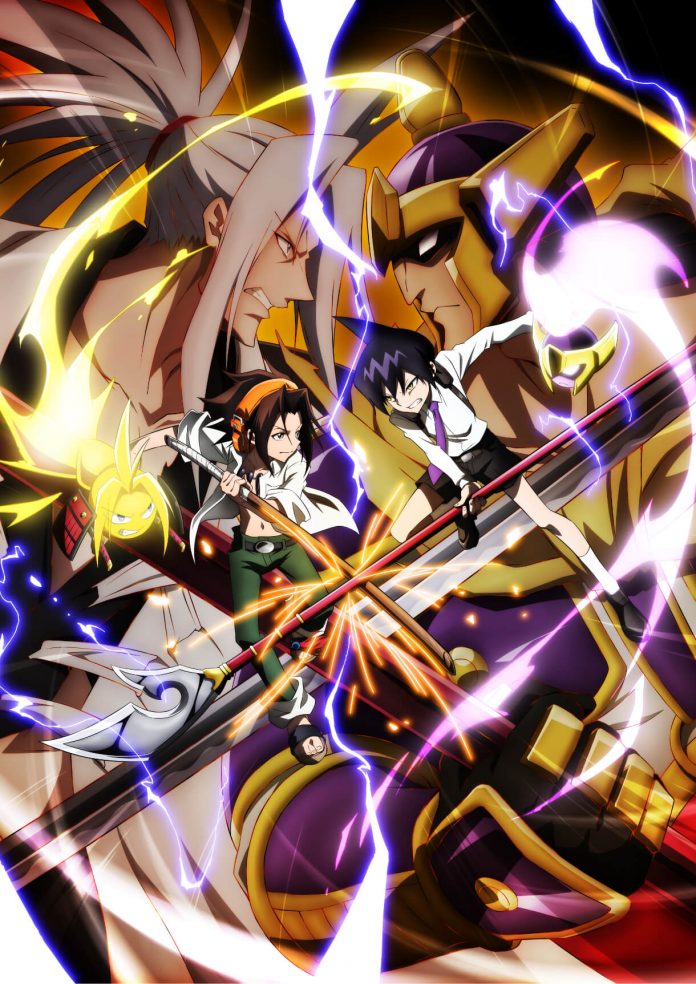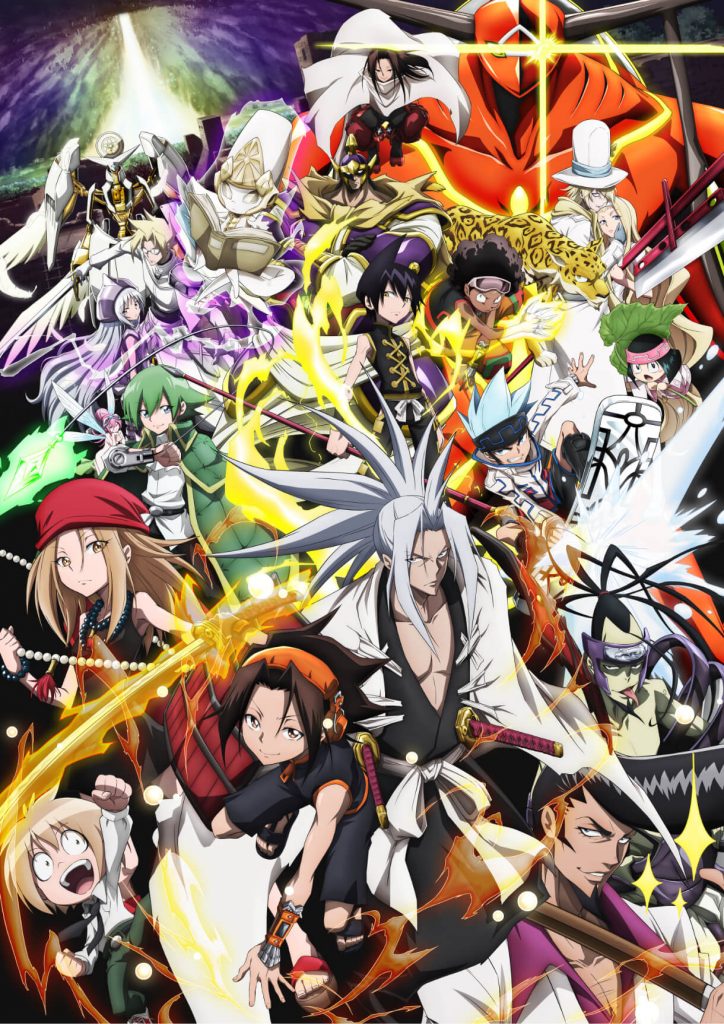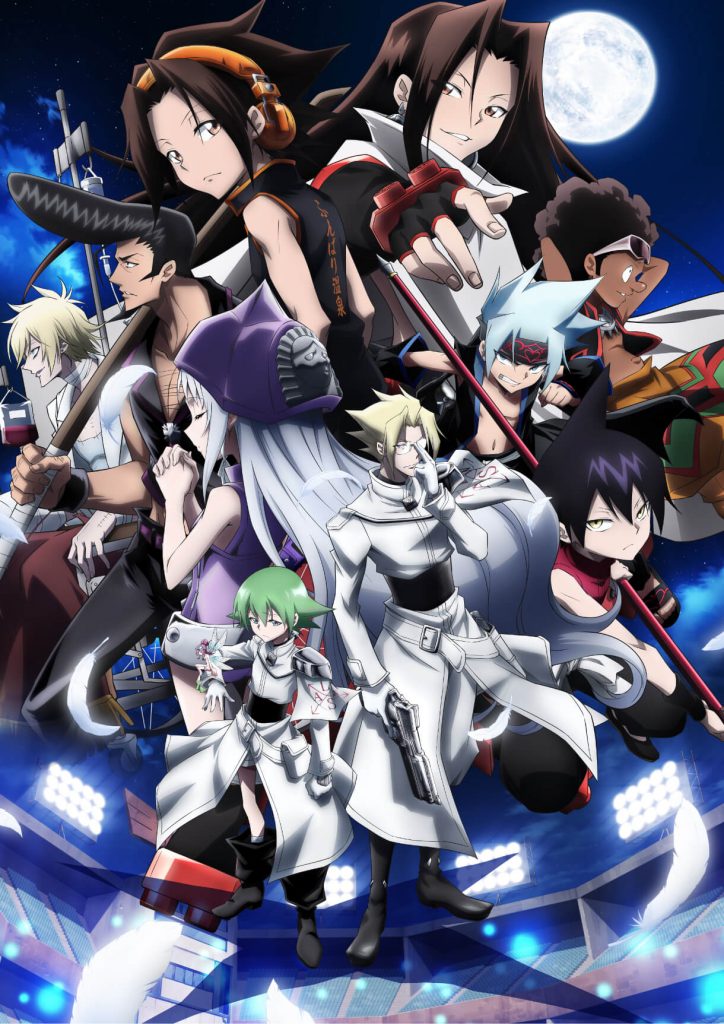Long-awaited, much-anticipated…these are just a few words to describe the 2021 remake of Shaman King. The series, originally written as a manga by Hiroyuki Takei, was a beloved childhood anime for many back in the early 2000s. It had a soul-rejuvenating theme song, a unique power system, and a diverse cast of characters. However, its streak of wonder ended long before anime and manga became mainstream staples in modern pop culture.
Read more: Interview: Justin Briner And Clifford Chapin On ‘My Hero Academia: Heroes Rising’
So, you can imagine everyone’s surprise when a trailer dropped for the near-impossible reboot of Shaman King in the early throes of June 2020. More than a year since the unexpected announcement, Netflix has finally released its first season on 9 August 2021. With its release comes a lot of questions. Did the story change? How different is this new remake? Is it better than the original? And, the most important one of all—is it worth the watch?
What is Shaman King?
To be able to fully appreciate this revival, one must understand the basic concept of the series. It’s about a boy in a quest to become the ‘Shaman King’; a title only awarded to those who win the once-every-500-years tournament. Along the way, he meets others like him: shamans aiming for that same goal. This is where the diversity comes in, with a cast of characters from all around the globe – from China to Germany, Egypt to England, and even fictional Native American tribes – all participating in said tournament.
Shaman King Then and Now
A lot of the good things about this series come from its nostalgia factor. One of the most recognisable aspects, the soundtrack, takes similar notes from the first series with its direction. Yuuki Hayashi – famously known for his works on My Hero Academia and Haikyuu! – even adds his own flair to it with a little bit of sentimental soundscape recognisable from his other works. Additionally, Megumi Hayashibara sings the new opening song, the same way she did back in 2001, while some of the old theme songs play through parts of select episodes.
There is also a significant effort made in both the Japanese version and the English dub to bring back the original cast. Despite this, there are naturally still some changes in voice actors and voice directions. Overall, however, it’s very clear that everyone is trying their best to give this new series the same feel as the old one. This is mostly successful on the Japanese side of things, especially with Romi Park and Hayashibara playing Ren Tao and Anna Kyouyama, respectively. Even Youko Hikasa, taking over from Yuuko Satou as the voice of Yoh Asakura, does her best to stay authentic to the character’s lazy and relaxed drawl.
Unfortunately, the same cannot be said about their English counterparts, with awkward deliveries from Tara Sands as Anna, and odd cadence choices for characters like Ryunosuke Umemiya. The voice changes for Yoh and Ren are some of the better-made decisions for the English dub of this adaptation.
Read more: Interview: Anairis Quiñones on Diversity in Anime and Voice Acting
The Positives
Thanks to the music and performances of the Japanese voice actors, the emotional heartbeat of the story remains heavily intact. In fact, one thing this series does well is setting the right atmosphere. With vibrant colors and mellow instruments, Shaman King delivers the theme of nature and spirituality through visuals and audio with a little more class and sophistication than the manga and its previous adaptation. The new art style works together with Hayashi’s score to brilliantly set the right tone for each specific scene.
The comedy itself is decades old, carrying familiar shounen clichés of the late 90s and early 2000s. Fortunately for this series, a lot of them are still as effective as ever at eliciting laughter from the audience – and in fact, it is actually very refreshing to relive some of these jokes. It helps a lot that the voice actors on both ends of Japanese and English deliver their lines with the same air of certainty as they did years ago, with the former being more successful than the latter. Some of the other outdated jokes can be cheesy and somewhat uncomfortable at times – but these are few and far between.
The Negatives
Shaman King’s pacing comes at you at a breakneck speed, and noticeably so; one particularly distinguishable production choice is the fact that some episodes discard the end credit sequence in favor of more storytelling space. I understand that the 2001 anime had some extra padding to it; a consequence of being a product of its time. However, compared to the 2011 version of Hunter × Hunter, which also tried to speed things past arcs already covered in its 1999 iteration, Shaman King falls into disarray due to the fact that there are little to no transitions.
Because of the pace, most conversations feel a lot like an information dump; every character line is exposition after exposition. There are moments where the pacing does peter out into something more digestible. In the modern era of binge-watching, this allows viewers to quickly adapt to the speed of the storytelling. This, however, has its downside as the rapid rate can easily tire viewers out.
Another major problem of this series is the low-quality art and animation. Shaman King is full of still frames and weirdly-proportioned figures; as seen in sharp facial structures and bobbleheads throughout action sequences. There is also an abundance of reused static shots. While not uncommon in animation, it’s especially jarring here; it occurs multiple times in one particular episode, and just a few minutes apart. Even for anime standards where such pitfalls are inevitable due to budget restrictions, the quality art distribution is pretty bad.
Conclusion
There is a lot to love here, with its penchant for comedy, vibrant colors, and a wonderful soundtrack. Both Japanese and English voice actors do a good job at reprising their roles and adding new spins to the characters where needed. Additionally, the premise itself is such an interesting concept all on its own. However, all of that is completely overshadowed by bad production choices. Whether or not it’s worth the watch, all I can say is you’ll have a much better time just reading the manga.
Shaman King is available to stream on Netflix now.
Words by Mae Trumata
Support The Indiependent
We’re trying to raise £200 a month to help cover our operational costs. This includes our ‘Writer of the Month’ awards, where we recognise the amazing work produced by our contributor team. If you’ve enjoyed reading our site, we’d really appreciate it if you could donate to The Indiependent. Whether you can give £1 or £10, you’d be making a huge difference to our small team.


